This post has nothing to do with radio engineering but is full of geeky goodness, nonetheless. My son is playing Little League again this year. This is his first year in the majors division, and I have to say, I have been thoroughly enjoying watching his games. There is, of course, one minor glitch in the matrix; the scoreboard, which occasionally looks like this:
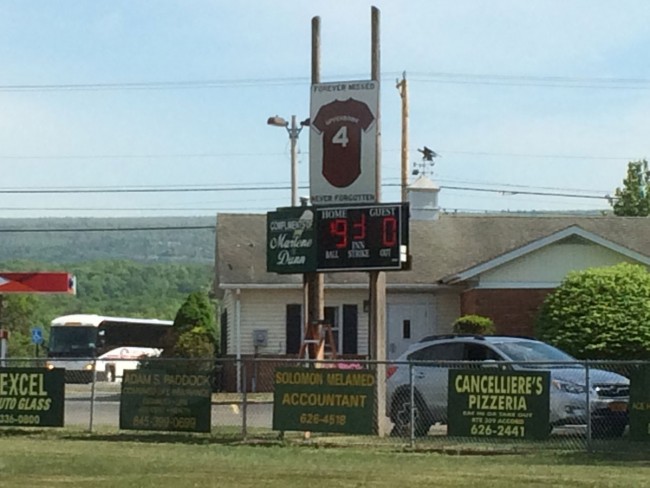
Now, that is more of an annoyance than anything else. I know what inning it is and what the score is. Truth be told, most of the time the scoreboard is being run by one of the parents (read: a mom) and they can become distracted at times. Very often, the ball/strike/out count is not correct, which in turn causes the home plate umpire to angrily stare up and the scorekeeper’s window.
Anyway…
As I was saying, more of an annoyance…
Regardless, I thought to myself; jeez, I fix things, perhaps I should have a go at that sign. So I spoke to one of the Little League board members who were more than grateful for any assistance I could render.
Thus, one afternoon, after work, I got the ladder out and started poking around to see what I could learn. These signs are relatively simple. Each digit on the sign has one circuit board. Each circuit board has seven segments. Each segment has fourteen LEDs in series. There is a Toshiba ULN2803APG, which is a 16-pin darlington driver, and an LM 317 voltage regulator which is fixed with a 62-ohm resistor.
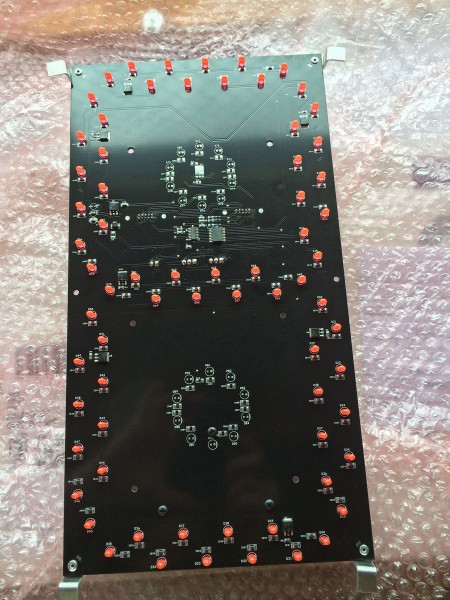
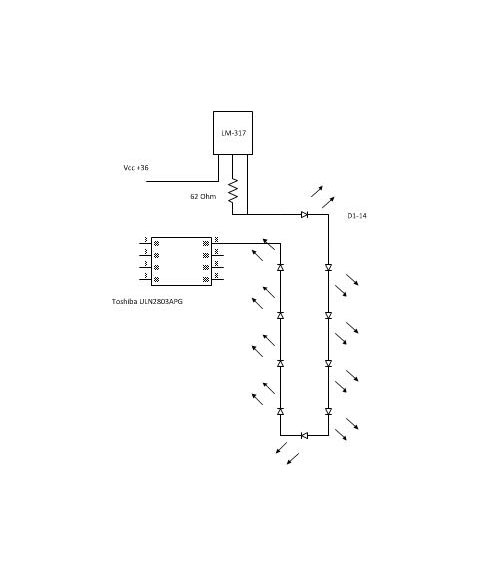
After poking around with the DVM for a while, I determined that the bad segments were due to open LEDs. I measured the working LEDs and determined that each LED was dropping about 1.7 volts. I took a board home with me and rummaged around in the parts bin until I found some orange 5MM LEDs that matched the voltage drop of the ones on the board. I confirmed my ladder-top troubleshooting findings on the workbench using the DVM in diode mode. I also noticed that the Fluke DVM had enough current to light the LED, thus making troubleshooting much easier. There were three bad circuit boards with various segments out.
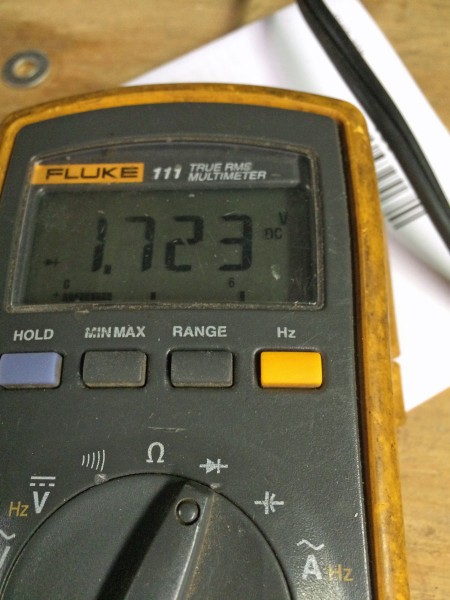
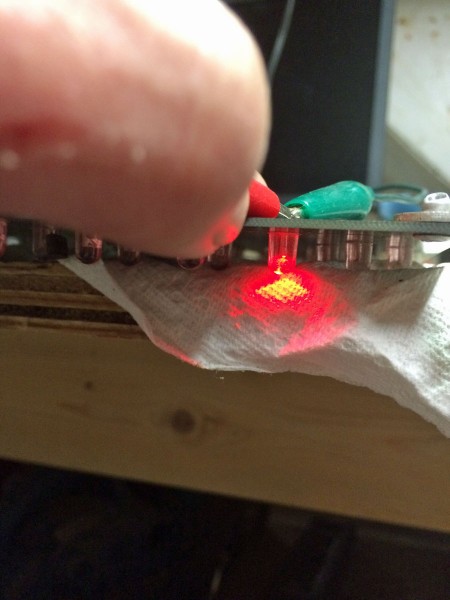
A few minutes with the soldering iron and presto:
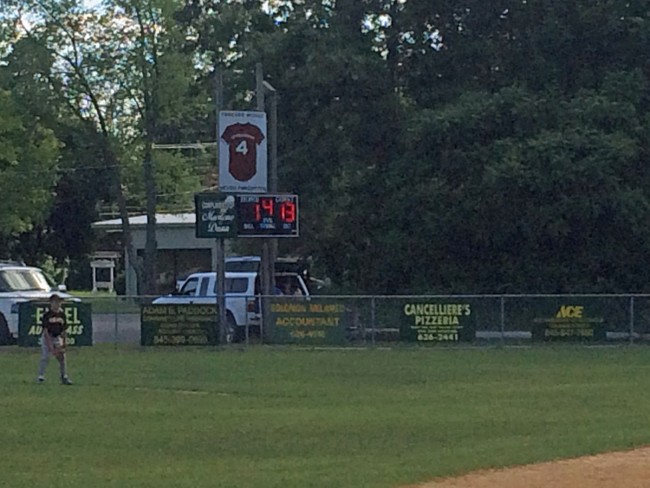
Sign repaired. I little further research and I found that an Everlight MV8104 LED (Mouser part number 638-MV8104) is a near-perfect replacement. Literally, a 23.3 cent (US) part.
In all fairness to the company that makes the scoreboard, this unit was new in 2003 or 2004. It has spent at least 11 years outside in upstate NY, which is not a tender climate. They will replace the digit circuit boards for 175.00 each, plus $25.00 shipping. My repair work used 9 LEDs ($2.10) plus about two hours of troubleshooting and repairing vs. $600.00 plus perhaps an hour to replace the boards.
